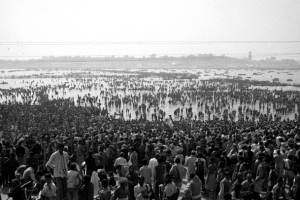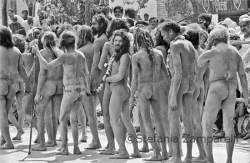India: Kumbha Mela – The Largest Pilgrimage in the World
 Haridwar – Uttar Pradesh | January 14 to April 28, 2010
Haridwar – Uttar Pradesh | January 14 to April 28, 2010
Kumbha Mela is a mass Hindu pilgrimage that occurs in India four times every twelve years and rotates among four locations: Allahabad (Prayag) at the confluence of the Ganga, Yamuna and mythical Saraswati river, Haridwar along the Ganga River, Ujjain along the Kshipra River and Nashik along the Godavari River.
The next Mela will be in 2010, from January 14th to April 28th. The dates of the Kumbha Mela depend on the stellar constellations. The last Maha Kumbha Mela took place in 2001.
Each twelve-year cycle includes the Maha (great) Kumbha Mela at Prayag, attended by millions of people, making it the largest pilgrimage gathering around the world.
The Maha Kumbha Mela (‘Great’ Kumbha Mela) which comes after 12 ‘Purna Kumbha Melas’ which is after every 144 years is also held at Allahabad. The 2001 Maha Kumbha Mela was attended by around 60 million people.
The Ardha Kumbh Mela (ardha means half) is celebrated every six years at Haridwar and Allahabad, while the Purna (complete) Kumbha always takes place at Allahabad every twelve years.
Kumbha means “pot” (the yoga practitioners certainly will recall the word kumbhaka (potlike) from the pránáyáma (breading) techniques. And Mela means “meeting”. The observance of Kumbha Mela is based upon the following story: thousands of years ago, perhaps in the Vedic period, gods and demons made a temporary agreement to work together in obtaining amrita (the nectar of immortality) from the Milky Ocean, and to share this equally. However, when the Kumbha (pot) containing the amrita appeared, the demons ran away with the pot and were chased by the gods. For twelve days and twelve nights (equivalent to twelve human years) the gods and demons fought in the sky for the possession of this pot of amrita. It is said that during the battle, drops of amrita fell on to four places: Prayag, Haridwar, Ujjain and Nasik. Thus, Kumbha mela is observed at these four locations where the nectar fell.
 Kumbha Mela is attended by millions of people on a single day. A ritual bath at a predetermined time and place is the major event of this festival. Other activities include religious discussions, devotional singing, mass feeding of holy men/women and the poor, and religious assemblies where doctrines are debated and standardized. Kumbha Mela (especially the Maha Kumbha Mela) is the most sacred of all the Hindu pilgrimages. Thousands of holy men/women (monks, saints, sadhus) grace the occasion by their presence. The suspiciousness of Kumbha Mela is in part attributed to the gathering of thousands of holy men/women at one place on earth.
Kumbha Mela is attended by millions of people on a single day. A ritual bath at a predetermined time and place is the major event of this festival. Other activities include religious discussions, devotional singing, mass feeding of holy men/women and the poor, and religious assemblies where doctrines are debated and standardized. Kumbha Mela (especially the Maha Kumbha Mela) is the most sacred of all the Hindu pilgrimages. Thousands of holy men/women (monks, saints, sadhus) grace the occasion by their presence. The suspiciousness of Kumbha Mela is in part attributed to the gathering of thousands of holy men/women at one place on earth.
Ardha Kumbha and Maha Kumbha are the occasions when millions of people gather to take holy dip in the sacred waters. This is main reason for one to attend the Maha Kumbha and the Ardha Kumbha festival. It is believed that a holy dip in sacred rivers during Maha Kumbha or Ardha Kumbha takes the human out of the circle of life and death and leads to attaining Moksha. Devotees, saints/sadhus turn up in great number from all over the world to take a dip in the holy waters of rivers like the Ganges, Yamuna and the mythological Saraswati at Prayag (Sangam). According to the traditions these holy rivers offer purity, wealth, fertility and wash away the sins of all those who take bath.
Event: Kumbha Mela 2010
Location: Haridwar – Uttar Pradesh, India
Dates: January 14 to April 28, 2010
References: kumbhamela, en.wikipedia, pt.wikipedia, hindunet, dhyanapeetam, photo.net, suryanagara.it and indospainworld
Category: Events




